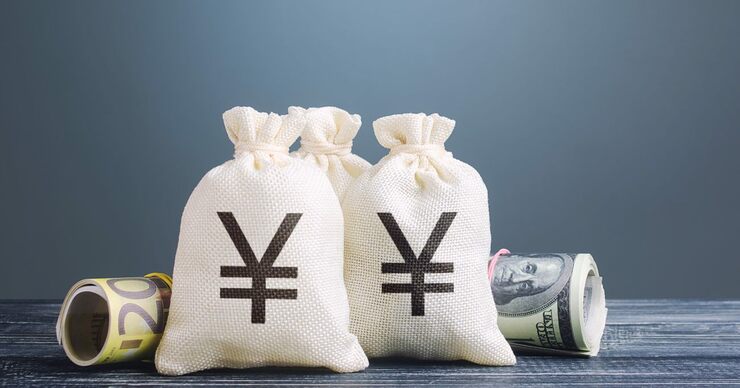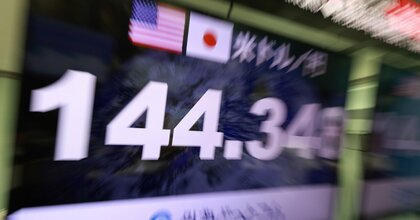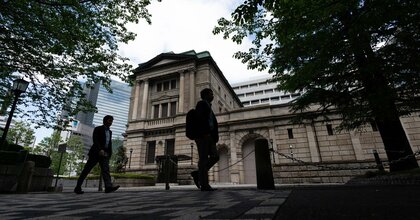Release valve
The world has entered a new phase of broad U.S. dollar strength. Surging U.S. interest rates have pushed the dollar to multi-year highs thus far this year, and currency moves over the past week or two have become sharper, more volatile, and in some cases non-linear with respect to other markets.
In this context, the yen’s over-20% fall against the dollar this year is not particularly exceptional. In fact, earlier this week, the pound briefly eclipsed the yen as 2022’s worst-performing major currency. Among the Group of Ten (G10) bloc, only two currencies have escaped double-digit falls against the dollar: the Swiss franc, which has behaved as a true safe-haven currency, and the Canadian dollar, supported by high commodity prices. Both are down around 7%.
The Japanese Finance Ministry’s decision last week to intervene in foreign-exchange markets should also be viewed against this backdrop of broad dollar strength.
The yen slipped to a fresh two-decade high against the dollar following the Bank of Japan’s (BOJ) decision to keep all major policy settings unchanged, even as other major central banks surprised with more hawkish moves: higher projections for their terminal rate (the U.S. Fed); larger-than-expected policy rate hikes (Sweden’s Riksbank); and exiting negative-interest-rate policy altogether (the Swiss National Bank).
But BOJ Governor Haruhiko Kuroda did not just hold off signaling any shift in the central bank’s dovish policy stance: In the press conference following the policy meeting, he suggested that forward guidance cementing the BOJ’s strong bias toward easing may not need to be changed for another 2 or 3 years. As markets digested this statement, the yen’s pace of decline accelerated.
This was an entirely rational outcome. If yield-curve control (YCC) is to be maintained for an extended period, the yen will, by necessity, become the only release valve for markets to reflect policy divergence between the BOJ and the rest of the world — as indeed has been the case all year. All else equal, markets should — and did — move to price in a weaker-still yen.
No end in sight
With this in mind, it is difficult to accept that yen weakness is caused by speculators. Rather, a weaker yen is a direct consequence of widening interest rate differentials, along with Japan’s widening trade deficit. Thus, while speculative positions — “yen shorts” — have risen over the past year, they are not the primary driver of the yen’s descent.
It is also difficult to escape the broader conclusion that simultaneously seeking to cap yields through YCC while limiting currency moves via currency intervention is an impossible proposition. This has been our long-standing view, and it is why we do not see a path toward yen strength unless the BOJ’s monetary policy changes course materially or if global yields peak out.
On the former, if Kuroda is to be taken at his word, no policy change is in the cards, even if we suspect the risk is that a shift in policy comes sooner rather than later. On the latter, we suspect that some market participants are too optimistic in calling for a peak in U.S. yields and, thus, the dollar. U.S. inflation is proving much stickier than many observers had expected.
In short, we do not think that last week’s intervention will mark an inflection toward a stronger yen. Our view that yen weakness has further to run, at least for now, reflects three factors. First, the outlook for yield differentials remains negative for the yen: The Japan vs. G10 average gap is set to exceed the pre-2008/09 wides.
Second, higher commodity prices suggest Japan’s trade deficit will remain a headwind. Indeed, Japan recorded a record deficit last month. Third, the possibility of an acceleration in Japanese households shifting yen-denominated assets into higher-yielding foreign currency assets remains a risk. Some data suggest that foreign currency deposit growth is already rising sharply.
Last week’s intervention will thus ultimately prove to be a wasted effort, in our view. The lesson from Japan’s intervention through the late 1990s is that the initial market reaction also tends to be the largest. In other words, temporary yen strength is most pronounced on the initial confirmation that intervention took place.
In late 1997, when the Finance Ministry instructed three days of yen-purchase intervention, the yen strengthened by around 6 yen against the dollar on day one. However, these levels were not sustained over the next couple of days. This cycle is unlikely to be any different.
We suspect that in the coming weeks, the yen will make fresh lows against the dollar. A move in the dollar-yen pair to the 147 level would put the yen within a whisker of its 1998 low. But against the backdrop of sustained dollar strength, a move toward the 150 level does not look impossible.
Ben Shatil is Head of Japan FX Strategy at J.P. Morgan. Ben joined J.P. Morgan in 2011 after working as a Research Fellow at the University of Tokyo and Lee Kuan Yew School of Public Policy, Singapore. He holds degrees from the University of Cambridge and Yale University. The views expressed here are his own.











